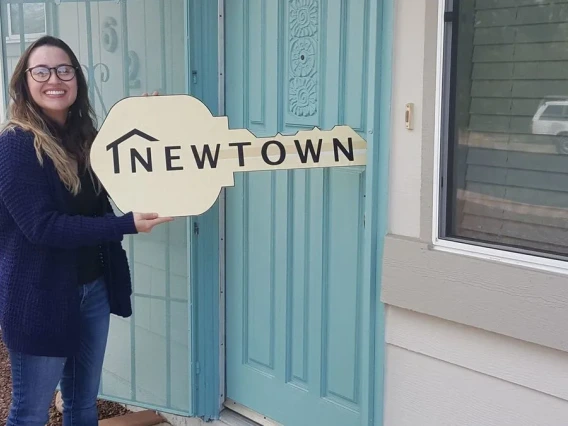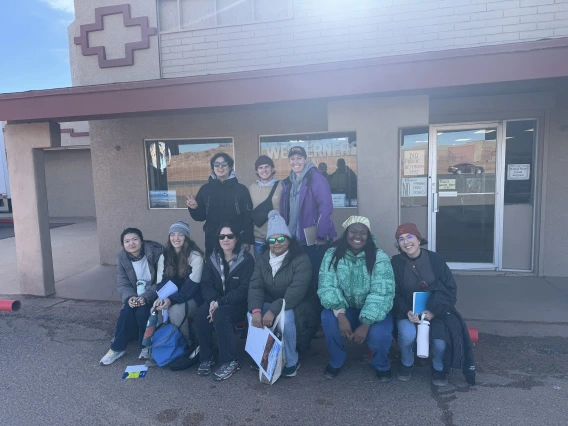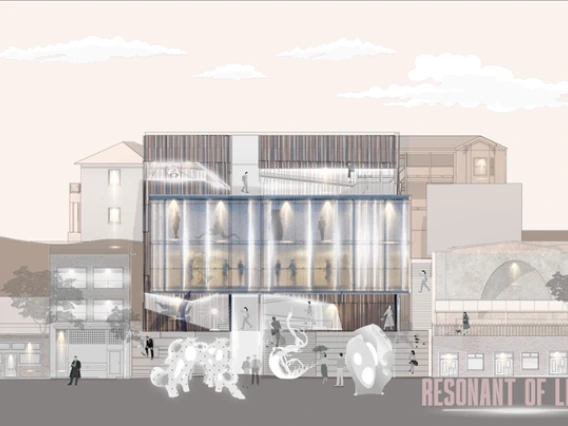Opening Doors to a Bright Future: Juliana Seymour ’20 B.Arch
CAPLA Job Interview Fair Helps Architecture Student Land Internship
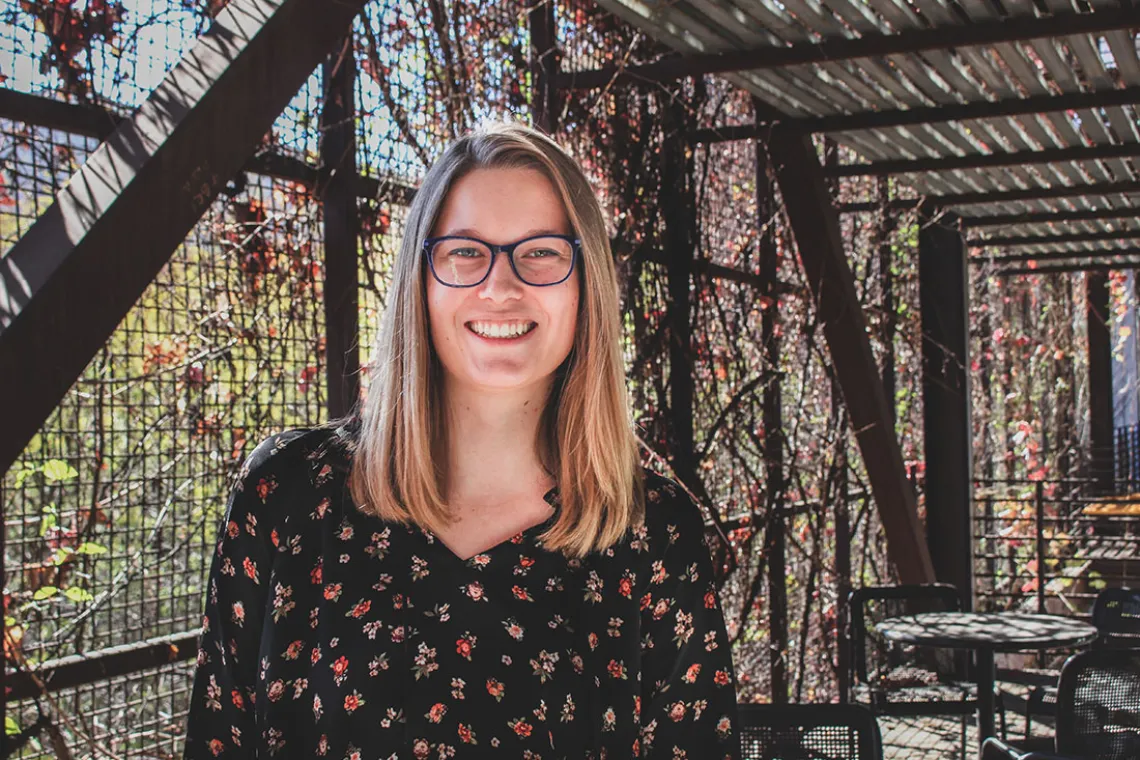
On the first day of her summer internship with Tucson architecture firm Swaim Associates, then-third-year architecture student Juliana Seymour made the kind of first impression you’d rather forget: she accidentally deleted a door from a large project file.
She had been asked to use Revit, software used to produce 3D model-based building designs and documentation. But she had not yet learned to use the complex software in her courses.
“I definitely screwed up,” she says. “But they were very understanding, luckily catching the mistake quickly—and since then I’ve worked on many projects and am quite confident with the software.”
She landed the internship thanks to the College of Architecture, Planning and Landscape Architecture’s Job Interview Fair. The Fair is open to all CAPLA undergraduate and graduate students, and provides a unique opportunity to hone interview skills, with the possibility of landing an internship.
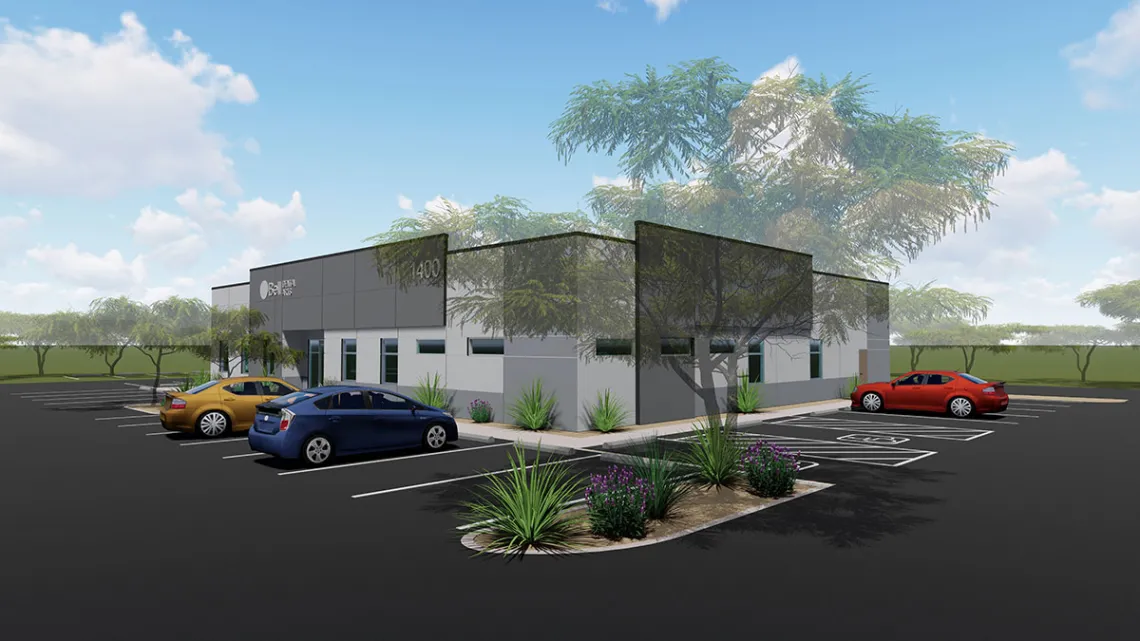
An unbuilt dental clicnic concept created by Juliana Seymour as an intern for Swaim Associates.
For many students, the Job Interview Fair is their first experience with crafting a resume and sharing their portfolio with local architecture, engineering and construction firms. But Seymour, who is originally from Seattle, had already sent her resume and portfolio to firms in the Pacific Northwest.
“I hoped to go back home for the summer,” she says, and it wasn’t until older students and her academic advisor encouraged her to gain interview experience that she signed up for the Fair: “I wasn’t expecting to land a job, but I knew it would be a positive learning experience.”
At the Fair she sat down with Mark Bollard, a principal at Swaim Associates. “We talked about my academic work, my experience and what I’m interested in,” Seymour says. “He shared their projects, how they work, the value they place in client relationships. It wasn’t as much an interview as a conversation.”
Two weeks later, at a CAPLA scholarship dinner, she unexpectedly found herself next to Phil Swaim, a principal and the son of Swaim Associates founder Robert Swaim: “I mentioned my name, and he said, ‘Oh, we just saw your resume last week. It was passed around and stuck out to us.’”
A week later she was invited to visit and they offered her the internship. While she interned full-time in the summer, “they told me if I’d like to continue and work part-time during the school year, I’d be welcome to do that.” The following fall, she worked a few hours during the week—“It was a good escape from school and great experience”—and her internship schedule has varied with classes and projects since. “They’re very flexible and want me to prioritize school first,” she says. This semester, her last at CAPLA, she’s working 18 hours per week.
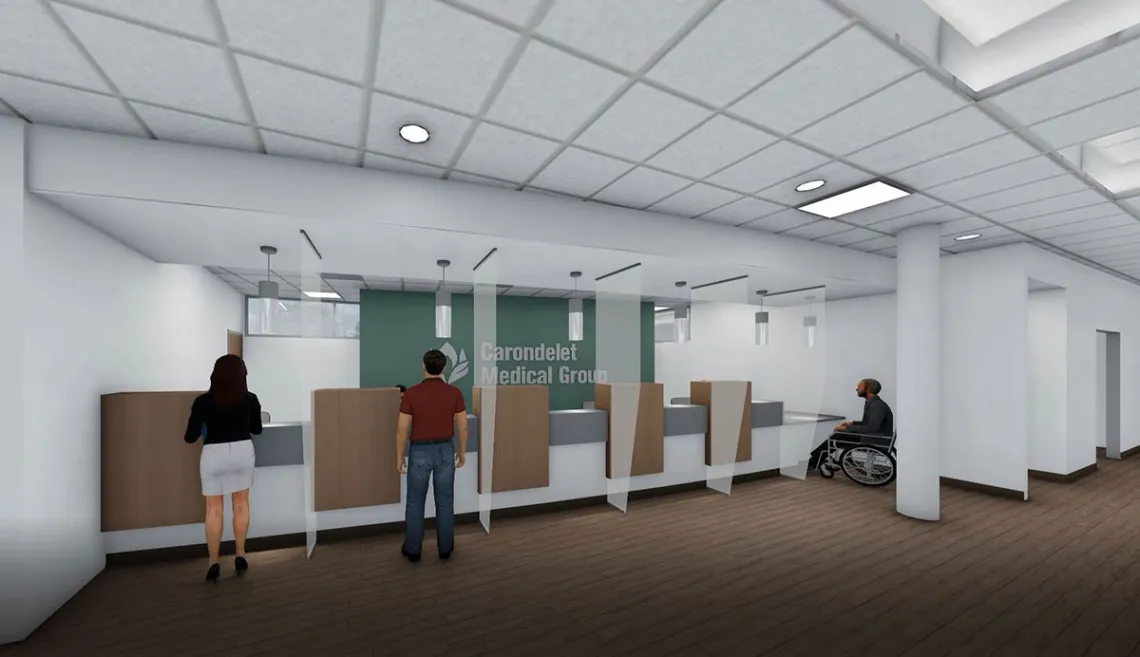
Video walk-through screenshot of a new Carondolet Medical Clinic created by Juliana Seymour as an intern for Swaim Associates.
Since that first day of the disappearing door, her responsibilities have increased and—thanks to close mentoring from Bollard—she has played a role in many of Swaim’s projects, particularly with updates to Banner and Carondelet medical facilities as well as assisting when she could on larger projects, such as Vail School District’s newest school, Mica Mountain High School.
“It’s pretty cool to say I designed a full building while in school that’s now under construction,” she says, speaking of the drawings she made for a new presentation center for Andrada Polytechnic High School in southeast Tucson.
In addition to the increased responsibility, Seymour most appreciates learning something new every day that’s “not fantastical, not super abstract, but about how architecture really gets built.”
“I’ve been a part of some very big projects, and even doing only small portions of the drawings, I get to know the whole layout very well. Seeing those designs then come to life and working with big teams has been great.”
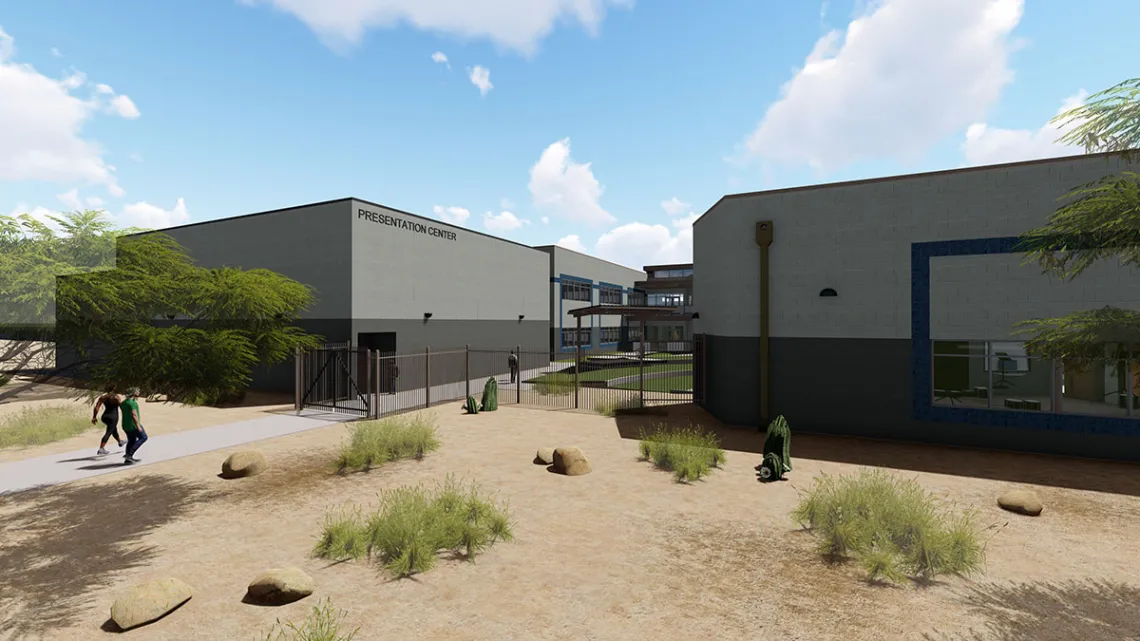
Rendering of Presentation Hall at Vail School District's Andrada Polytechnical High School created by Juliana Seymour as an intern for Swaim Associates.
She’s also been able to record nearly half of the required 3,740 AXP hours through her National Council of Architectural Registration Boards Record while interning. “Once I graduate I can continue recording the remaining hours and start taking my exams for licensure right away,” she says.
Her advice for other CAPLA students seeking job interview experience and internships is to “just try it, even if it ends up being practice. Maybe they’re not interested this year, but next year they’ll remember you. It’s a good networking opportunity and you can start to create connections for future jobs.”
“I’ve learned a lot more about construction documents in the real world, something that, although introduced, cannot fully be taught in five years of architecture school,” she says. “An internship is a great way to do that. I never thought at this point I would have been in charge of a whole drawing set, but here I am, thanks to the Job Interview Fair two years ago opening that door.”

